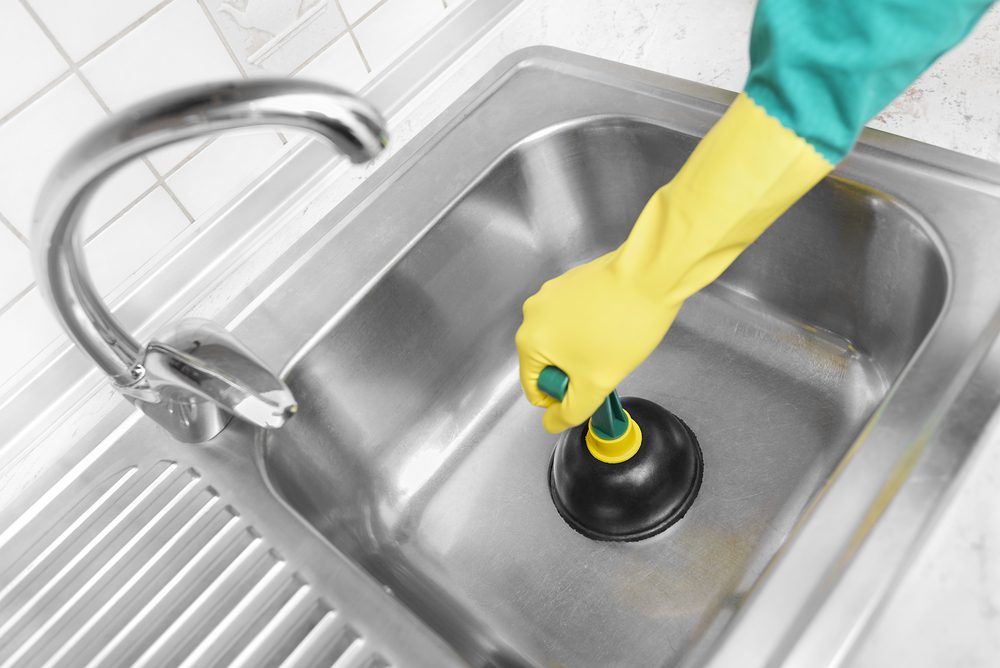What are your opinions about Three Common Ways to Fix a Slow Drain?

Introduction
We have actually all existed: You're cleaning your teeth or cleaning your hands, and you discover the water pooling in the sink. Rather than rapidly swirling down the drain, it sticks around, turning your once-refreshing early morning regimen right into a mini swamp scene. A slow-draining sink isn't simply bothersome; it's frequently an indicator of bigger pipes problems hiding underneath the surface area. The bright side is that most slow-draining sinks can be taken care of with a little knowledge, a few basic tools, and some persistence. Ready to tackle this task head-on? Let's roll up our sleeves and dive right in.
Recognizing the Reasons For a Slow-Draining Sink
Prior to you start poking around in your pipes, it aids to recognize what could be triggering the stagnation. Comprehending the root cause makes it simpler to select the right fix.
Devices and Materials You'll Require
The right tools make all the difference. Fortunately, you won't require a completely stocked plumbing professional's van to finish the job.
Step-by-Step Guide to Taking Care Of a Slow-Draining Sink
Currently, let's get involved in the nitty-gritty. This step-by-step process will guide you through easy techniques to recover your sink's drainage.
Action 1: Get Rid Of and Tidy the Stopper
Often, the stopper (that small plug you push down to obstruct water) is the first culprit. Remove it carefully and clean off any type of hair or gunk entraped around its base. Rinse it completely prior to placing it back in position.
Step 2: Make Use Of a Plunger to Remove Debris
Got that plunger ready? Placement it over the drain and offer it a few company pumps. The idea is to create suction that can loosen any blockage. If you see little bits of debris floating up, you're on the right track.
Step 3: Try a Drain Serpent or Cord Hanger
If the plunger doesn't do the trick, it's time to highlight the drainpipe serpent. Carefully feed it right into the drainpipe and spin as you go. You might really feel some resistance-- that's likely the clog. Keep twisting and pulling up until you get rid of the blockage. If you don't have a drain snake, a straightened out wire hanger can work in a pinch.
Step 4: Use a DIY Drain Cleaner
An all-natural cleaner made from cooking soda and vinegar can break down recurring crud. Pour half a cup of baking soda into the drainpipe, adhered to by half a mug of vinegar. Let it fizz for around 15 mins, then flush with warm water. This chemical reaction commonly does marvels for minor blockages.
Tip 5: Rebuild and Check the Sink
Put whatever back together and run the tap. Does the water currently swirl down the tubes at a reputable speed? If yes, provide on your own a pat on the back. Otherwise, do not misery-- there are still a few even more dress up your sleeve.
Crucial Tools for DIY Repairs
A bettor is your go-to beginning factor. A tiny, sink-sized bettor creates suction that can displace small clogs. For more persistent obstructions, a drain serpent (sometimes called a plumbing's auger) works marvels. A pair of gloves, a flashlight, and maybe a pair of protective goggles are also convenient.
Advised Cleaning Solutions
Light meal soap and hot water can aid break down greasy accumulation. A mixture of cooking soda and vinegar is a reliable natural remedy, and enzymatic cleaners provide an even more green strategy. Maintain chemical drainpipe cleaners as a last resort, as they can be rough on your pipes.
Usual Perpetrators Behind Slow Water Drainage
So, what's blocking points up? Commonly, it's a mixture of daily particles-- believe hair, soap scum, tooth paste deposit, and leftover food bits. Over time, these little bits build up and hold on to the pipe wall surfaces, slowly narrowing the flow and making it harder for water to travel through. Sometimes, mineral deposits from difficult water can likewise contribute to the gunk, producing the ideal tornado for stubborn obstructions.
When is it Time to Act?
If you notice the water draining slower than usual, it's a great concept to intervene faster instead of later. Waiting as well long can bring about complete clogs, unpleasant smells, or even pipe damages. If the water takes more than a couple of secs to remove after turning off the faucet, consider it a warning and get ready to put on your do it yourself hat.
Security First: Safety Measures and Preparations
Prior to you launch into unclogging mode, think about safety. You're dealing with potentially unclean water and debris, so slip on a set of gloves. If you're utilizing chemical cleaners, make sure the space is well-ventilated and comply with the directions on the label.
Protective Equipment and Work Area Setup
Set some old towels or dustcloths around the sink area to capture dashes. Eliminate any kind of products that may get in your method, like soap dispensers or toothbrush owners. Make sure you have excellent lights-- grab a flashlight if needed.
Alternative Methods for Stubborn Clogs
Not all blockages are developed equivalent. If your sink still refuses to cooperate, think about these alternate remedies.
Baking Soda and Vinegar Technique
We already touched on this, however it deserves noting again. This mild, environment-friendly technique is safer than chemical cleansers and frequently quite efficient.
Chemical Drainpipe Cleansers
Enzyme-based cleaners make use of all-natural bacteria to absorb raw material. They're an excellent option if you're looking to stay clear of rough chemicals. Just remember, they may take a bit longer to work their magic.
Chemical Drainpipe Cleaning Company: Advantages And Disadvantages
Chemical cleaners can blow up via hard clogs fast, yet they're not without downsides. They can generate warmth and fumes, damages pipelines if made use of exceedingly, and present environmental dangers. Utilize them sparingly, and constantly adhere to the directions very carefully.
Preventive Measures to Maintain Your Sink Flowing
Prevention is the very best cure. By embracing a few easy practices, you can keep your sink from decreasing in the first place.
Regular Cleaning Practices
Clean down the sink basin and component area regularly. Remove hair or food particles before they have an opportunity to wash down the drain.
Avoiding Hazardous Substances Away
Hesitate before disposing coffee grounds, grease, or coarse vegetable scraps down the sink. These offenders cling to pipe walls, developing blockages over time.
Routine Upkeep Checks
Schedule a fast month-to-month inspection. Run warm water through the sink for a few minutes, focusing on the circulation. If it appears sluggish, act fast before it becomes a full-blown blockage.
When to Call a Professional Plumbing Technician
In some cases, no matter just how tough you try, that obstruct simply will not move. That's when it's time to bring in the pros.
Indicators That Indicate a Much More Serious Concern
If your sink drains pipes gradually regardless of multiple efforts, or if you discover water supporting in various other fixtures (like your shower or commode), you might have a more significant plumbing concern hiding much deeper in the system.
Balancing Do It Yourself Efforts with Expert Aid
While do it yourself can save you money and provide a feeling of success, there's no shame in calling an expert. A specialist plumbing technician can examine your entire plumbing setup, guaranteeing there's no underlying damage or lasting problem that might cost you a lot more down the road.
Comparing Prices and Long-Term Solutions
Before choosing, think about the big picture. An inexpensive, quick fix might resolve the trouble briefly, yet investing in a more long-term remedy can conserve you money and anxiety over time.
Weighing the Expenses of DIY vs. Specialist Repairs
Do it yourself solutions usually set you back bit more than the cost of a bettor or a container of baking soft drink. Specialist services, on the other hand, featured a price yet might prevent repetitive issues and costly fixings later.
Investing in High Quality Fixtures and Upgrades
If your sink's layout adds to regular clogs, it might be worth upgrading to higher-quality components or modifying the pipes layout. Consider this an investment in your home's capability and comfort.
Final thought
A slow-draining sink can feel like a minor inflammation, however it's typically a sign that your pipes requires a little TLC. By understanding the source, utilizing the right tools and techniques, and committing to simple safety nets, you can keep your sink streaming freely. And when all else stops working, never ever be reluctant to hire a professional-- your home's plumbing is worth the investment in care and upkeep.
Three Common Ways to Fix a Slow Drain
Baking Soda Method
Boil a full pot of water. Measure out cup of baking soda and pour it down the drain. Then take cup of the magical cleansing substance known as white vinegar and drop that down there too. Allow the mixture to fizz in the drain for five minutes as the vinegar and baking soda combine. Now dump in that whole pot of boiling water. This combination of cleaning substances should clear out anything that is causing your sink to drain slowly. If it doesn t...
Zip-It
If the baking soda method doesn t clear out your drain, it may be because a significant amount of hair and/or other debris has collected there and you need to remove it. Purchase a Zip-It tool at any home improvement or hardware store and insert it into your drain. It will catch any collected hair or debris that s blocking the flow of water. Pull it out. If it s got a big clump of hair, etc. on the end, you ve probably got your culprit.
Drain Cleaner
If these methods don t work, there is the standard drain cleaner that you can also buy in a hardware store or even your local grocery store. It s better if you can use a household solution, but these drain cleaners often work in a pinch. They re very simple to use. You generally just dump them in your drain and wait. If even this method is not effective, it may be time to call the plumber.
https://www.mrrooter.com/oneida/about-us/blog/2017/july/three-common-ways-to-fix-a-slow-drain/

I stumbled upon that write up about Solved! How to Fix a Slow Sink Drain when browsing the search engines. So long as you enjoyed our article kindly remember to share it. We love reading our article about Three Common Ways to Fix a Slow Drain.
Get Offer
 Jake Lloyd Then & Now!
Jake Lloyd Then & Now! Neve Campbell Then & Now!
Neve Campbell Then & Now! Alicia Silverstone Then & Now!
Alicia Silverstone Then & Now! James Van Der Beek Then & Now!
James Van Der Beek Then & Now! Raquel Welch Then & Now!
Raquel Welch Then & Now!